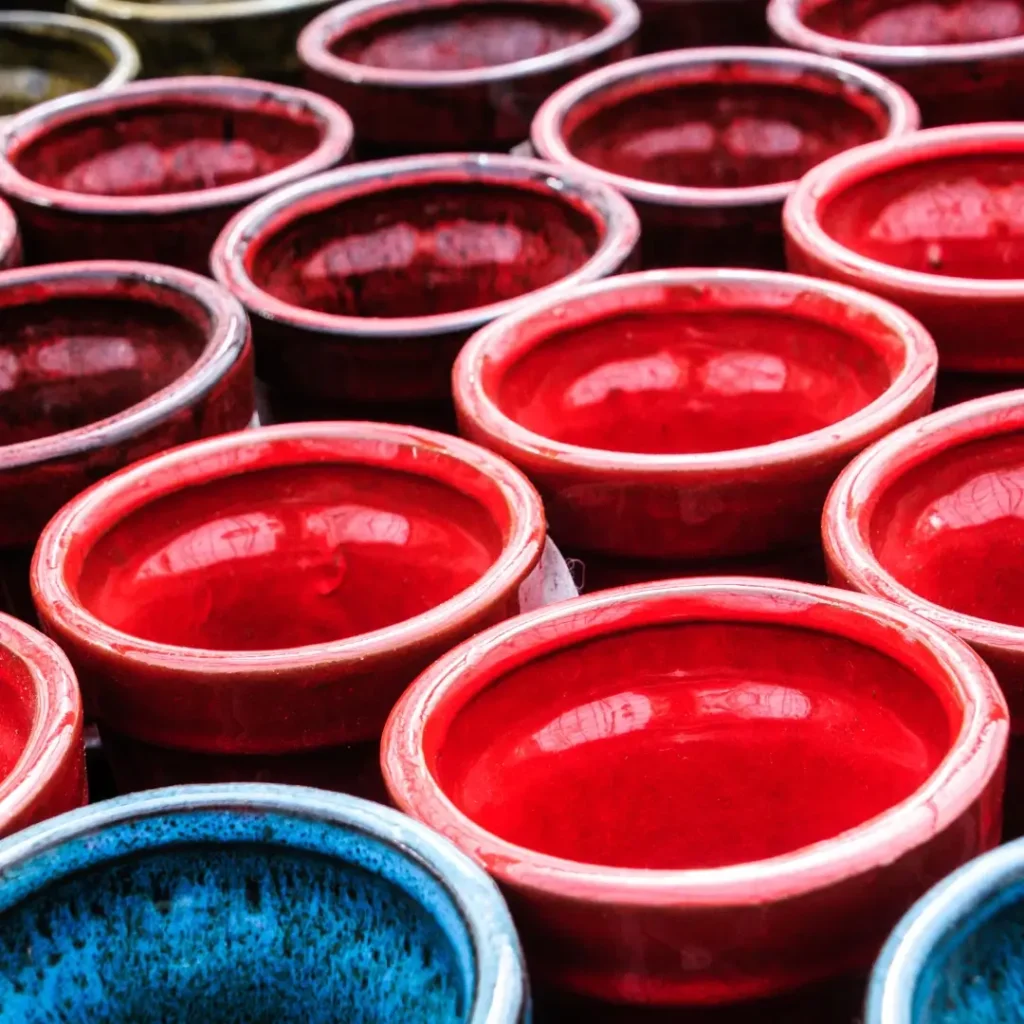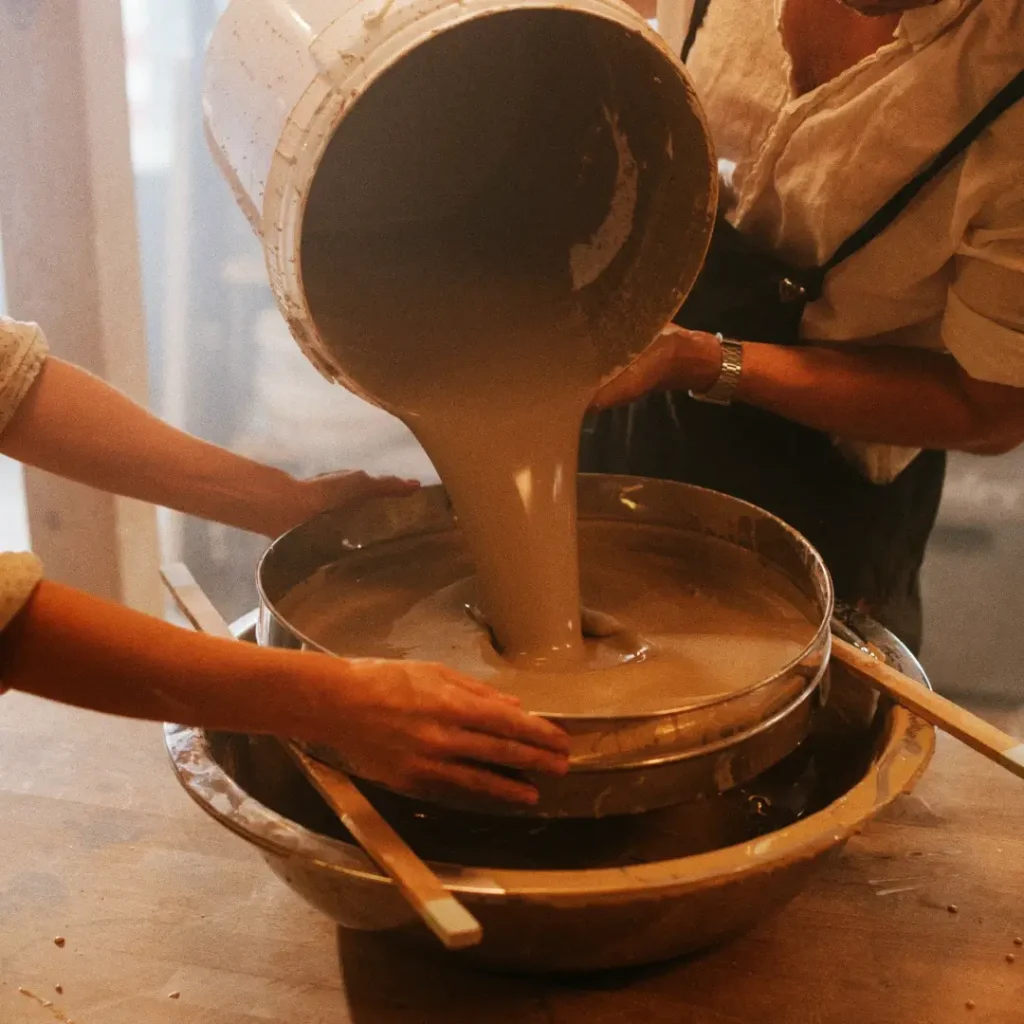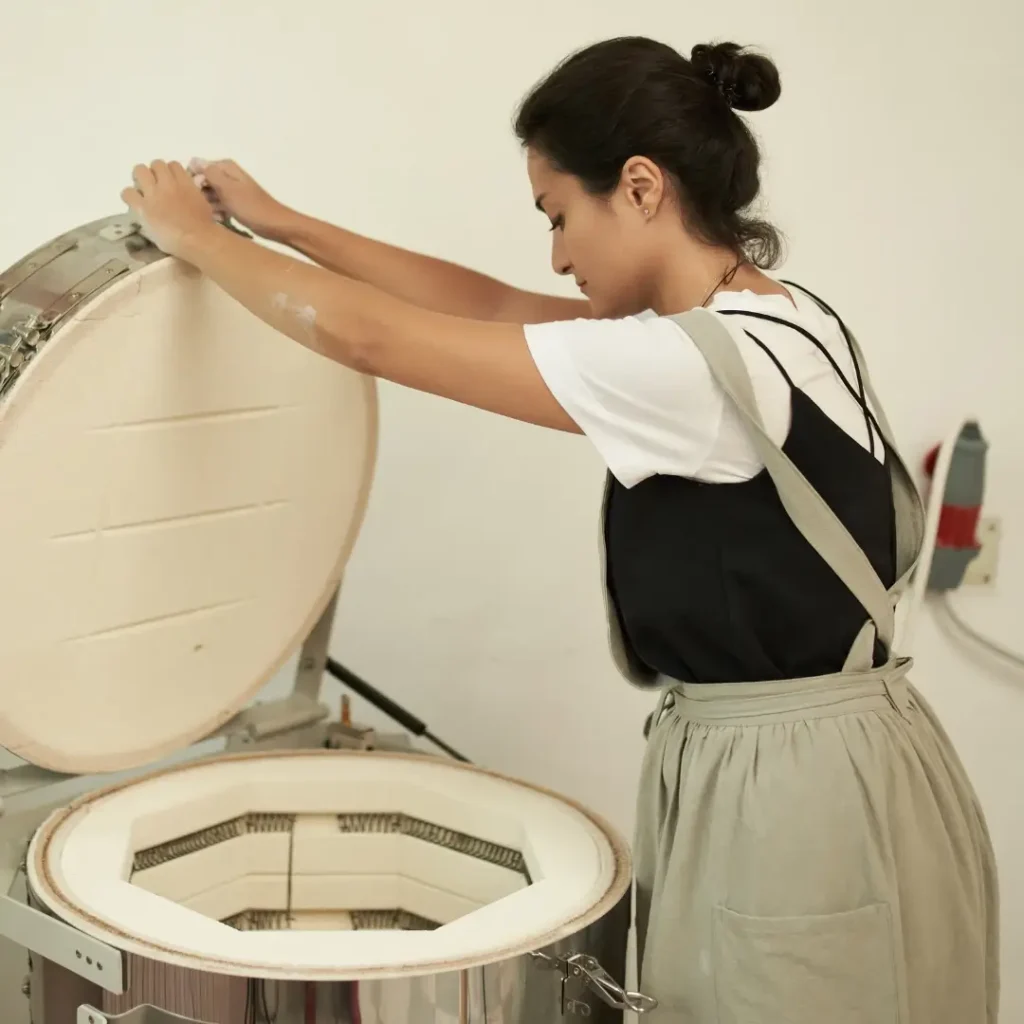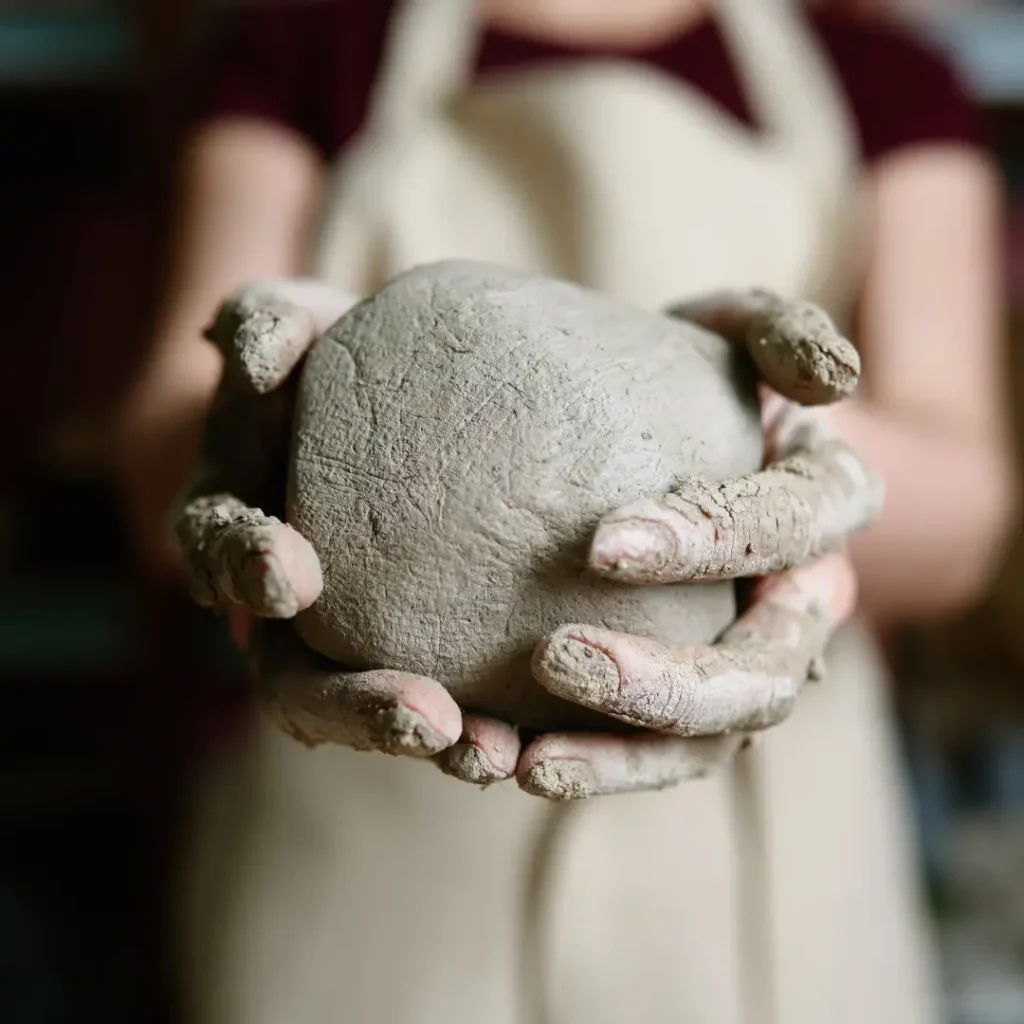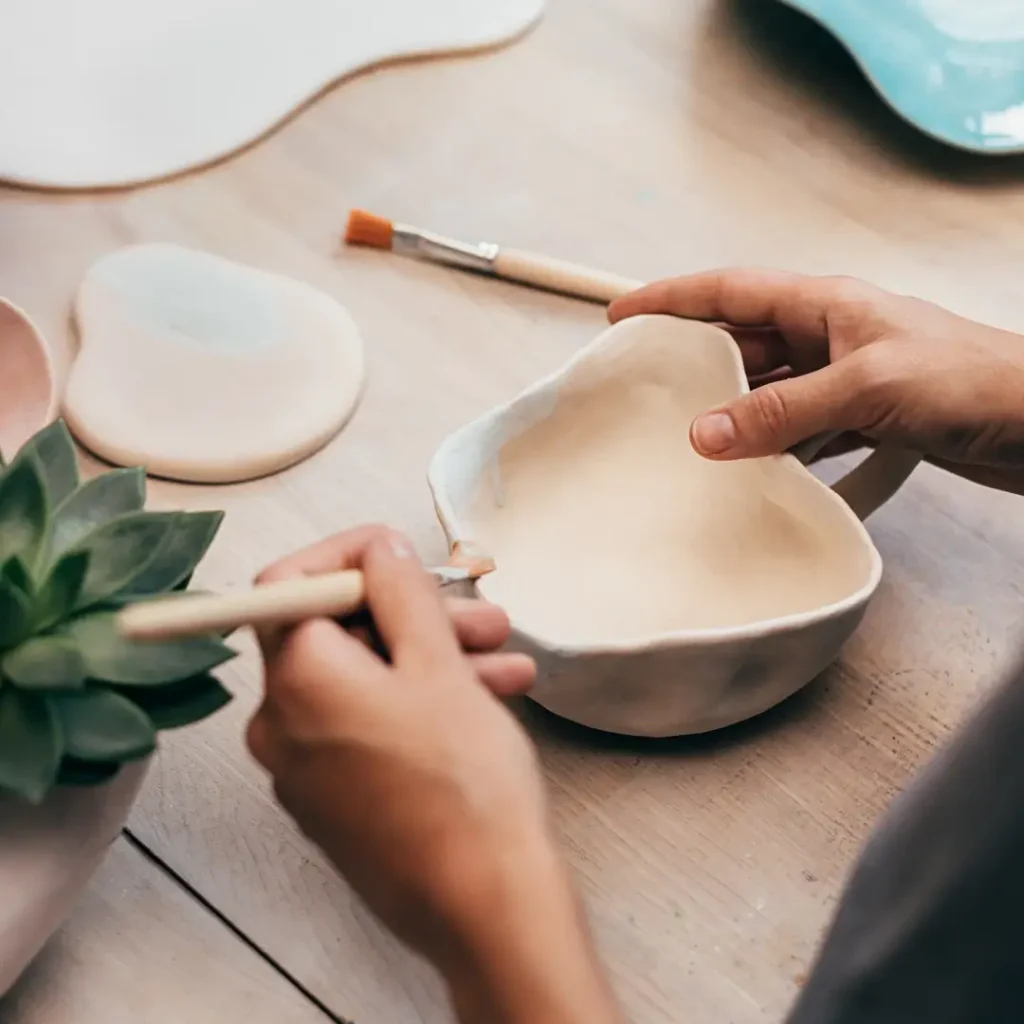The wonders of stoneware in modern ceramics
Have you ever wondered what makes some ceramic pieces so resistant? The answer lies in stoneware, that sturdy and versatile variety of the ceramic world that makes us completely forget the fragility of an antique teacup.
In this article, let’s dive into the bowels of the earth to understand how this champion material is formed, how it works and why it is a favorite choice of artisans and gourmets alike.
Y eso no es todo, porque el gres también guarda secretos y anécdotas que te sorprenderán

What defines stoneware?
Stoneware is a ceramic material characterized by being particularly durable and resistant. It is composed of high-quality clay which, when subjected to very high firing temperatures – generally between 1200 °C and 1400 °C – vitrifies, i.e. it becomes a very hard and dense substance with very low porosity.
This quality gives it exceptional resistance to environmental factors, making it ideal for a wide range of uses, from tableware and kitchen utensils to tiles and objets d’art. It can be glazed or unglazed, and is often valued for its natural aesthetics and its ability to maintain both the temperature of food.
In addition, it is known for its versatility and its ability to mimic the appearance of natural materials such as stone, making it a favorite among ceramists and artists seeking durability without sacrificing aesthetic beauty.
The Fascinating Origin of Stoneware
Stoneware is a legacy of ancient ceramic alchemy, born in the ancient forges of China more than three millennia ago. Perfected during the illustrious Song dynasty with its iconic celadon, it crossed continents and eras, until it took root in the heart of medieval Europe.
On the banks of the Rhine, German craftsmen gave it its distinctive glossy finish, creating the renowned salt stoneware. This venerable material has witnessed history, adapting and evolving, not only as a medium for the creation of everyday objects but also as an art form, fusing the robustness of stone with the delicacy of handcrafted design.
His journey from ancient oriental kilns to modern ceramic studios is a tale of continuous innovation and timeless beauty.
What types of stoneware are available in ceramic
There are several types that differ in their manufacturing methods, composition and finishes. Here are some of the most outstanding:

- Porcelain stoneware: It is extremely hard and practically non-porous, which makes it stain resistant and very durable. It is ideal for high quality tiles and tableware.
- Glazed Stoneware: A glaze is applied to its surface to add a decorative finish and an additional layer of protection. This glaze can offer a wide range of finishes from matte to glossy and can include a variety of colors and patterns.
- Vitroceramic stoneware: This material has been treated to develop a vitreous texture on its surface, which gives it a high resistance to thermal shocks.
- Fine Stoneware: The base clay from which it is made has been refined to obtain pieces with a smoother and more uniform surface, often used in tableware and decorative items.
- Salted Stoneware: A traditional technique in which salt is thrown into the kiln during high temperature firing, creating a beautiful glazed surface by the reaction of the salt with the clay.
- High Resistance Stoneware: Specifically designed for industrial or architectural use, it can withstand high loads and extreme conditions.
- Flamed stoneware: This type has a special coloring effect, achieved by introducing substances that reduce oxygen in the kiln, which causes the glazes to form unique and vibrant patterns.
- Gres Texturado: Presenta una superficie texturada, a menudo para añadir un aspecto rústico o antideslizante, especialmente en baldosas y adoquines.
- Extruded Stoneware: It is manufactured by an extrusion process, where clay is pressed through a mold to form various shapes and profiles. This method is particularly useful for creating pieces with complex and uniform shapes, such as tiles and bricks. It is also known for its robustness and is commonly used in architectural and industrial design applications.
- Rustic Stoneware:It is characterized by its natural aesthetics and irregular texture that mimics natural stone. It is often left unglazed to preserve its earthy and authentic finish. It is widely used in decorations that seek a return to the natural, offering a robust and traditional look in both interiors and exteriors.
Unique Properties of Stoneware in Ceramics
Stoneware is a favorite choice in the world of ceramics because of its versatility and exceptional qualities. Here are some of its unique properties that distinguish it:
- Vitrification: One of the most notable characteristics of stoneware is its ability to vitrify during firing. This means that its clay particles fuse into a dense, vitreous mass, resulting in a ceramic body that is extremely strong and resistant to water and chemicals.
- Durability: Thanks to vitrification, it is highly resistant to wear, scratches and impacts. This makes it ideal for tableware and kitchen utensils that are used on a daily basis, as well as for tiles and coverings that require a long service life.
- Thermal Resistance: It can withstand sudden changes in temperature, which makes it suitable for items that go from a hot to a cold environment and vice versa. This makes it ideal for cooking and food storage.
- Low Porosity: After baking, a very low porosity is achieved, which means that it absorbs very little water. This property is beneficial for storing liquids and for outdoor applications where frost resistance is required.
- Aesthetics: Stoneware is not only functional; it is also prized for its beauty. It can range in color from natural earth tones to richly colored glazes, offering a wide range of aesthetic possibilities for artists and designers.
- Compatibility with Glazes: Its neutral nature makes it an excellent base for glazes, which adhere well and can develop a variety of surface finishes and textures.
- Ease of Handling: Despite its robustness, it is relatively easy to shape and work before firing, allowing ceramists to create a wide range of shapes and sizes.
- Sustainability: As a natural clay product, it is an environmentally friendly and sustainable material. At the end of its useful life, it can be crushed and recycled or returned to the environment without causing damage.
Comparison with Other Ceramic Materials
This resistant material stands out in the broad spectrum of ceramic materials due to several distinctive characteristics, let us clarify the differences with other well-known ceramic types as well.

.
Difference between Stoneware and Terracotta
Terracotta is known for its reddish color and higher porosity, which makes it less resistant to water and more prone to frost compared to stoneware. Terracotta is fired at lower temperatures and is often used for sculptures and pots, while stoneware, fired at high temperatures, is more resistant and is used for highly durable tableware and tiles.
Difference between Stoneware and Earthenware
Earthenware is another common ceramic material that is fired at lower temperatures, resulting in higher porosity and lower strength. Earthenware may be easier to shape and paint, but stoneware outperforms earthenware in resistance to chipping and long-term durability.
Difference between Stoneware and Porcelain
Porcelain is famous for its fineness, translucency and high strength despite its delicate appearance. Although both porcelain and stoneware are vitrified and non-porous, porcelain is fired at even higher temperatures and has a purer composition, which can make it more fragile in certain uses. Stoneware, on the other hand, is more robust and impact resistant, although it does not offer the same aesthetic finesse as porcelain.
Difference between stoneware and majolica
Majolica refers to ceramics coated with an opaque tin glaze that hides the coloration of the ceramic body. While majolica is prized for its vibrant surface decorations, stoneware is more prized for its inherent strength and the ability of its surface to display high quality glazes.
Differences from Black Mud
Black clay, typical of certain regions such as Oaxaca in Mexico, has a characteristic dark coloration and a distinctive metallic sheen. Although unique in its aesthetics, stoneware outperforms black clay in terms of durability and heat resistance, making it more suitable for a wider range of functional applications.
Conclusion
In short, stoneware is an exceptionally versatile ceramic material that combines durability, strength and aesthetics.
Its ability to meet environmental and functional challenges makes it an outstanding choice for a wide range of applications, from tableware to cladding to sculpture.
We hope you liked this post. It will help us if you share it on social media 👍
Note: This article contains links that lead to the artists’ stores on other non-Ceramicartis sales sites. If you make a purchase there, we will receive a small commission that will help us to continue with the site and in turn continue to support their work. This does not increase the selling price of the artist.
Latest posts:
